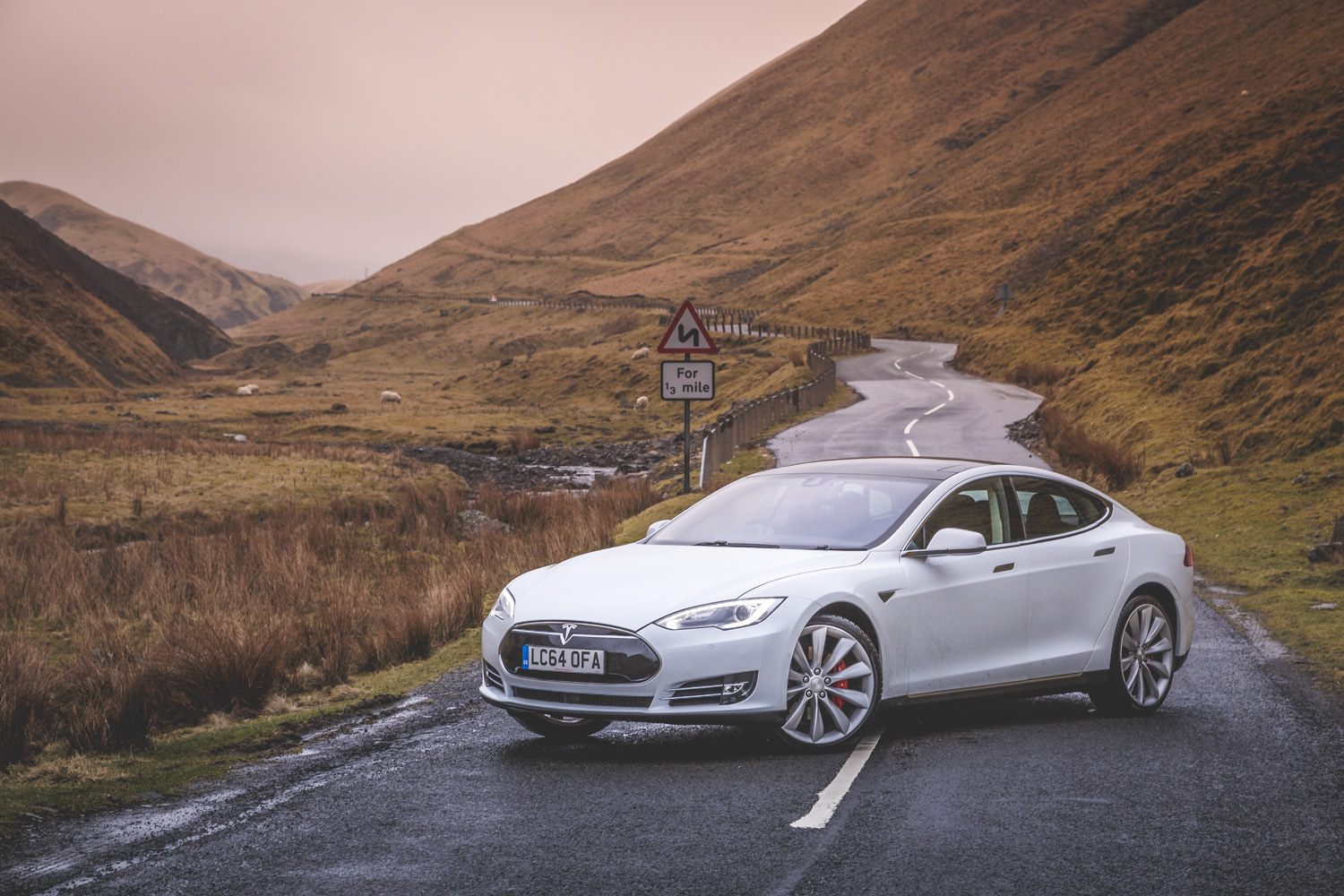Tesla has always been at the forefront of electric cars. Powerful drivetrains, wide charging network, and plenty of innovations. But how about the Tesla reliability? Are they any good? That’s what we’re going to answer today in this post. From their reliability ratings, common problems, and what you can expect when you buy a Tesla.
Tesla Reliability: Overview
As you probably know, Tesla is an American electric vehicle company founded in 2003. There are several key people behind it, but most notably is Elon Musk who currently serves as the CEO.
Electric cars will never be as exciting as cars with internal combustion engines (ICE) for us gearheads. However, we won’t deny that they have their advantages. For example, the electric motor in EVs means instant torque, resulting in insane acceleration that only a few ICE cars can match.
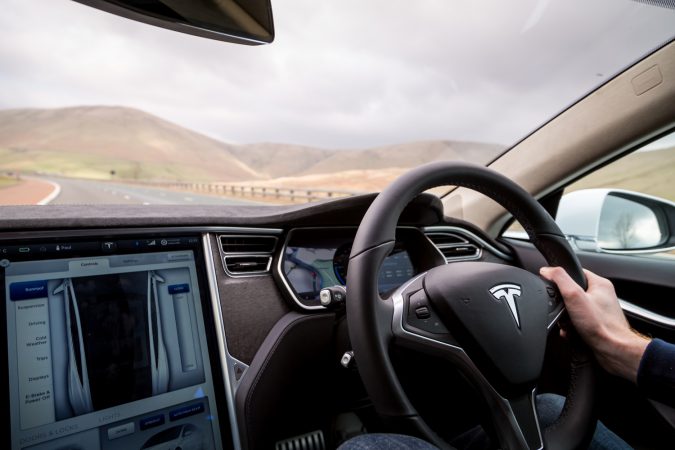
They’re also incredibly smooth and quiet since they don’t use a series of small explosions as means to power the car. Making them ideal for luxury cars where carmakers try to separate the engineering as far away as possible from the driver anyway. And finally, they should be more reliable and trouble-free than normal cars – at least on paper.
This is because electric cars have a lot fewer moving parts. The motor for example is just one moving part, and they don’t need a transmission to operate. This means they should require much less maintenance and should be more reliable as there are fewer things to go wrong.
However, this might not be true for Tesla cars. They actually often rank quite low in reliability ratings. Consumer Reports ranks them at 27 out of 28 in 2020, with Lincoln being the worst. J.D. Power also found out that they’re well below the industry average.
Tesla Reliability: Common Problems
The question now is what’s the problem? Why are they ranked so low in these reliability surveys? We’ll get into why later on, but here are the common problems that owners often encounter:
1. Suspension Problems
This seems to be the most widespread mechanical issue that their cars are facing. Many owners are reporting their suspension is making a clunking noise while driving. Some even report the suspension assembly failing entirely with wheels falling off.
The problem seems to stem from the sway bar and its links. The sway bar is a component that helps to keep the car stable during cornering. And the links are what connect them to the car’s steering arm or knuckle. Eventually, they will wear down and become loose, resulting in clunking noises and affecting the handling.
The sway bar links usually last at least five years in most cars, but owners of the 2018 Tesla Model S are reporting this problem already. We’re not quite sure why this is happening, but it likely has something to do with the weight of their cars.
Due to the battery, electric cars like Tesla are very heavy. The Model S for example weigh anywhere between 4,500 – 4,800lbs which is very heavy for a car its size. While it’s not the only car to weigh this much, the sway bar links are possibly not designed to handle this weight. Another common problem owners seem to encounter is with the ball joint of their control arm.
Tesla recalled certain 2019 – 2021 Model 3 and 2020 – 2021 Model Y due to front suspension issues. While Tesla might fix these problems for free, be aware that some owners have had to pay out of pocket. Some spent upwards of $2,000 to fix the issue.
2. Sudden Shut Down Issue
The next Tesla reliability problem is with their cars shutting down out of nowhere. This one is a lot less widespread but it’s still a serious issue so we feel we should address it. Some owners report their cars shut down suddenly without any prior warnings.
One Model S owner shared their experience where their car suddenly displayed a “Vehicle Shutting Down – Pull Over Safely” warning after just two weeks of ownership. Some Model 3 and Model X owners are also reporting this problem where their car suddenly shuts down.
Again, we’re not quite sure where the problem stems from. But the Model X owner reports that it was due to a faulty High Voltage controller. As mentioned, this issue is few and far between. And to be fair, Tesla rarely has any issues with their powertrain which is good. But it’s something that you need to be aware of.
In any case, if your car shuts down suddenly, here’s what you need to do (regardless of what car you have):
- Remain calm, slowly pull over to a safe and well-lit location.
- Do not brake suddenly, let your car coast until you reach somewhere you can stop safely.
- If you have a passenger, it’s a good idea to have them record the event. This might help with diagnosing the problem.
- If possible, stop somewhere with an address so it’ll be easier for towing services or roadside assistance to find you.
3. Media Control Unit Problems
Tesla calls their entertainment system the Media Control Unit (MCU). This is the unit that controls the large touchscreen display in the car, and there are reports of the screen being unresponsive or shutting down completely.
Errors with the entertainment system are usually a mild annoyance. However, it’s a much bigger problem in Tesla as it controls many aspects of the car. This includes the air-conditioning, rearview camera, and even the drive/gear selector in some of their cars.
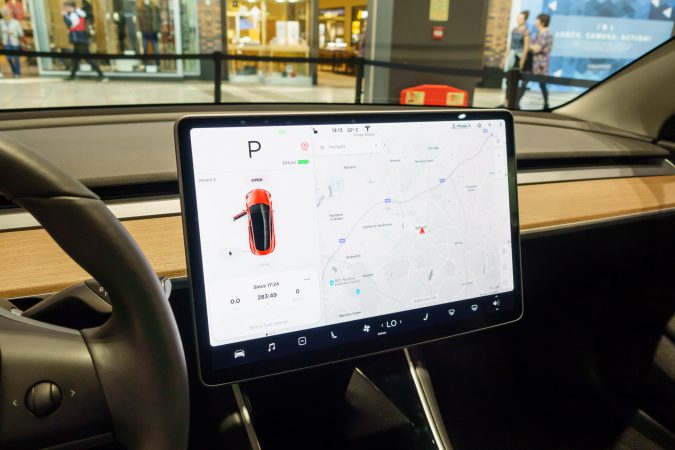
In early 2021, Tesla removed the physical gear selector in their Tesla Model S and Model X. This means the driver needs to use the display screen to select gears, you can see how this is problematic if the display screen is unresponsive. This problem also affects other cars in their range from as early as 2012.
Thankfully, after pressure from the NHTSA, Tesla has recalled nearly 135,000 of their cars to fix this issue earlier in 2021. The recall includes the 2012 – 2018 Model S and the 2016 – 2018 Model X. Other models are also experiencing this issue, but there have been no recalls for the Model 3 or Model Y regarding this issue thus far.
4. Brake Caliper Issue
Some Tesla cars have a potential brake issue, namely the 2019 – 2021 Model 3 and the 2020 – 2021 Model Y. Specifically, there was a potential issue with the bolts for the brake caliper. As you can imagine, this is incredibly dangerous.
The problem was that some of the bolts holding the brake caliper could be loose. This is due to the assembly-line workers may have mistakenly loosened the bolts. Thankfully, they did a recall earlier in 2021 which recalled around 6,000 affected vehicles.
There have been no casualties or injuries caused by this problem. And by now they should have already fixed the problem. If you’re looking to buy a secondhand Model 3 or Model Y from this period, check if the vehicle has come in for repairs during the recall.
5. Build Quality Problems
The last common Tesla reliability problem is with their build quality. This is arguably the biggest problem that Tesla cars have, it’s not uncommon to see them having this issue. When we say build quality, we’re referring to the fit and finish of the whole car. This includes interior trims, external accessories, and body panels.
Tesla is notorious for this problem. It can be as simple as a slightly uneven body panel gap, to something more annoying such as a low-quality paint job that damages easily. We even found one owner that reported the bumper is not properly attached:
“Since we purchased our vehicle, the bumper has never been fully attached to the car brackets. Tesla has attempted to fix this at least 5 or 6 times. The last visit resulted in Tesla installing a completely brand new bumper which appears to be fully attached.” – 2019 Model X Owner in Pleasanton, California. NHTSA ID Number 1138456.
There are more of these build quality issues that we can’t possibly mention all. And the problem from one car to another may be unique as this is probably mostly due to human error in the assembly line. If you buy a Tesla, make sure to check for build quality issues upon delivery.
Tesla Reliability: Other Common Problems
There are a few more Tesla reliability problems that owners have experienced. However, these are more minor and/or not quite as widespread as the problems we mentioned above. Still, there have been complaints, and here are some of them:
- Some owners have complained about rattling noises while driving. This is likely due to loose interior trims, related to the build quality issues that plague Tesla.
- Autopilot and forward collision avoidance problems. Tesla cars can be equipped with an “autopilot” system where the car can drive autonomously. Cars that aren’t equipped with this usually have a more basic forward collision avoidance system. In both systems, many owners report their cars doing unpredictable things. Such as braking when there’s no obstacle ahead, swerving out of a lane for no reason, and in one instance the brake wasn’t responsive. This affects multiple vehicles, but the 2021 Model 3 seems to have the most complaints.
- Juddering during heavy acceleration seems to be a common problem in the 2018 – 2019 Model S and Model X, especially on the P100D model. The issue seems to come from a shim (washer) on the front motor, but it seems the issue has been fixed for newer models.
Tesla Reliability: Why Are They Unreliable?
Reliability studies usually survey the number of problems that appear for owners. The more problems they report or complaints there are, the more unreliable the car is. Which then affects the overall reliability rating of the carmaker.
In the case of Tesla, there are numerous complaints of build quality problems with bodywork, electronics, and suspension leading to their low score. So, why are there so many reports regarding these problems?
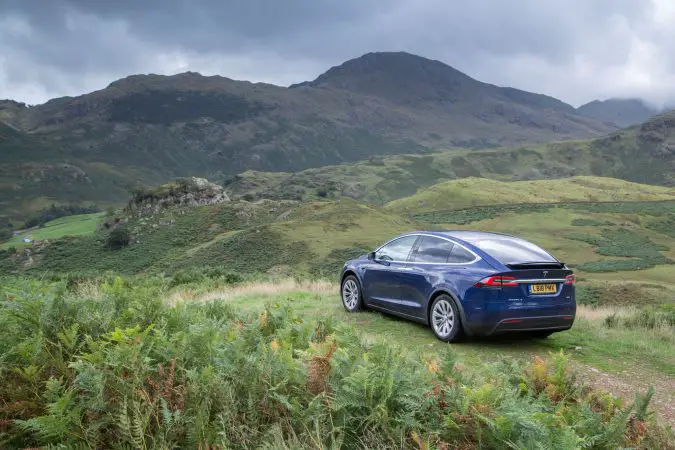
When it comes to the build quality, we think it mostly has to do with their manufacturing process. Unlike say BMW or Toyota, Tesla doesn’t have decades of experience in manufacturing cars. The lack of experience means there are bound to be flaws and inefficiencies in their manufacturing process, in addition to poor quality control. Resulting in inconsistencies and questionable jobs on their build quality.
As for other problems, it may have to do with the novel technologies they use, especially for their Media Control Unit. Few cars use their display screen to control so many things about the car, this means they need to use a powerful processor to power this unit. Not only that, the software is one of a kind. As with any novel technology, you’re bound to find some reliability issues.
To be fair to Tesla, their drivetrain seems to be quite reliable. The battery in their cars are wearing out at a reasonable rate, and there are few complaints about the electric motor.
How About The Suspension And Brake Issue?
We feel like these issues are nothing out of the ordinary. While it’s worrisome and is potentially dangerous, they’re not the only carmaker that has these problems with their car.
Even the most experienced carmakers encounter issues with parts wearing out much quicker than they should. For example, the Nissan Rogue is notorious for early transmission failure. Meanwhile, the VW Atlas has a widespread fuel injector failure problem, failing as early as 21,000 miles in some cases.
So, while it’s a blemish on their reputation, you’re bound to encounter these sorts of problems on almost any car. Some are quite minor, such as the DRL failure in the Mazda CX-5. While others are more serious such as the suspension issue in Tesla.
Should I Buy A Tesla Then?
While Tesla’s reliability is questionable, they have several advantages that we just can’t ignore. First of all, their drivetrain is regarded to be one of the best out there. While other electric cars such as the Porsche Taycan and Audi e-Tron might be more fun to drive, Tesla still has one of the most powerful drivetrains available in any mass-produced electric car.
The other advantage we just can’t ignore is their supercharging network (to learn more, check out our guide on how long does it take to fully charge a Tesla). These supercharging stations can charge the car and give 200 miles of range in just 15 minutes, and a full charge in 30 minutes. For comparison, a standard rapid charger usually needs 30 minutes to get 100 miles.
There are over 900 supercharger stations in the United States, and so far, no other carmaker has taken up Tesla’s offer in using the supercharger station. This means only Tesla cars can use them. If you do a lot of road trips, this eases the range anxiety that so many EV owners experience.
Interestingly, Tesla actually leads in a customer satisfaction study by Consumer Reports. While they’re one of the least reliable cars, customers are still very happy, so Tesla must be doing something right.
Buying A Tesla: Things To Consider
If you’re buying secondhand, our advice stays the same: do a thorough test drive and do a pre-purchase inspection. This will help you to identify if there are any potential problems with the car.
If you have your eyes set on a brand new Tesla, there are a few questions you should ask yourself to help you decide. But for the most part, buying from them is a painless process because of one simple thing: you don’t haggle.
With other carmakers, dealerships are not a part and not managed by the carmaker – they’re a separate company. Meanwhile, Tesla manages all their showroom. So, they run their own store, prices are the same across stores and non-negotiable. If anything, Tesla is encouraging customers to buy cars from their website. If you hate haggling (such as myself), this is a massive plus point.
Now, here are the questions you should ask yourself:
1. How Much Range Do I Need?
The range in their cars varies depending on the model and the trim. But in general, you’ll get somewhere between 220 to 335 miles. Basic models will be on the lower end of the spectrum, and there are long-range versions that usually give at least 300 miles of range. Tesla currently has four models, and here is the rough estimate:
- 260 to 405 miles for the Model S.
- 220 to 310 miles for the Model 3.
- 235 to 360 miles for the Model X.
- 230 to 320 miles for the Model Y.
As you can see, the larger Model S and Model X will give your more range since they can accommodate a larger battery. While the smaller Model 3 and Model Y has a shorter range.
If you go on a lot of road trips, then the larger models will suit you better. You can go for longer without having to find a charging station. But there are also long-range versions for the smaller models. However, if you mostly use your car for your daily commutes, such as going to the office and grocery shopping, the range in their smaller models will be more than enough.
Of course, the model you will buy will heavily depend on your budget. This brings us to…
2. What’s My Budget?
As with any purchase, it depends on your budget. The Model 3 starts at $45,190, making it the cheapest and the entry-level Tesla. If you want a larger sedan, then the Model S starts at $96,190 for the basic model, while performance and long-range versions will cost over $100,000.
They also have crossover SUVs on offer. The Model Y is their compact crossover which starts at $58,190, available in both five-seat and seven-seat configuration. Although the third row will be quite cramped and won’t be comfortable for adults.
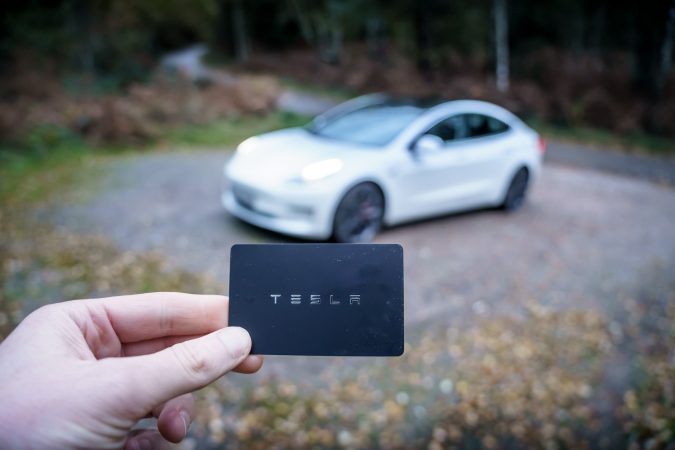
The most expensive one is their Model X which starts at $106,190 for the base model. So, if you’re on a budget, the Model 3 and Model Y will be your option. The Model 3 is a good choice, but the Model Y is available with seven seats should you need it and gives you a bit more ground clearance.
If you’re willing to splurge and you want performance, the Model S is the way to go. The Model X isn’t a hardcore off-roader, but if you need more space and want more ground clearance, it’s the better choice.
3. What Features Do I Want To Add?
Like any other carmaker, there is a list of extra equipment that you can fit into your Tesla. Things like satellite radio, better audio systems, heated seats, larger wheels, and many others are available. We recommend taking a look at their website to learn more.
The biggest question you probably have is should you get the autopilot system? This one is quite interesting, as all new Tesla comes with a basic autopilot system. If you want the Full Self Driving (FSD) feature, it’s locked behind a paywall. You can either pay $10,000 upfront or pay a $199 monthly subscription fee.
The FSD feature includes:
- Navigate On Autopilot
- Auto Lane Change
- Autopark
- Summon
- Smart Summon
- Full Self-Driving (FSD) Computer
- Traffic Light and Stop Sign Control (Beta)
The basic autopilot system will give you Traffic-Aware Cruise Control and Autosteer. The autopilot feature is probably enough for most drivers.
If you’re still not sure about which model to buy, or what accessories to fit, we recommend watching the video above. It’s a bit lengthy but will give you a comprehensive understanding of the Tesla range.
Tesla Reliability: Maintenance
Owning an electric car is going to be slightly different than owning a conventional gas car. The upside is that owning electric cars doesn’t require any fluid changes such as engine oil and transmission fluid change since they don’t use any.
However, you will still need to test the brake fluid in addition to changing the brake pads themselves, changing the cabin filter, and of course, maintaining the air conditioning system as you would with a gas car. You can learn more about this on their website.
As mentioned, electric motors are mostly trouble-free and don’t require maintenance. However, you’ll want to look after the battery as it’s consumable and will degrade over time. The battery will lose around 4% of its maximum capacity after 100,000 miles, and about 10% after 160,000 miles.
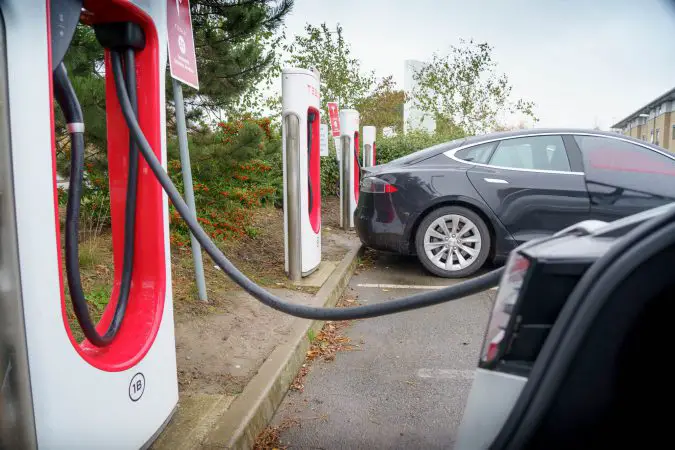
To help reduce battery degradation, here are some things you can do:
- Minimize exposure to high temperatures. Park indoors or in the shade whenever you can, especially when charging.
- Avoid fast charging when not necessary as this puts additional strain on the battery cells.
- Charge between 40% to 80% as this will reduce the strain on the battery cells and help them last longer.
If you want to learn more about the battery in Tesla and how to maintain them, you can read about them here.
Consumer Reports’ Car Reliability Study
- Consumer Reports released its annual reliability study, which surveyed vehicle owners about issues they experienced in the last 12 months to predict model reliability.
- Tesla ranked 27th out of 28 brands considered, with the Model S, Model Y, and Model X receiving below-average reliability scores.
- The most reliable brands in the study were Lexus, Mazda, and Toyota, while the least reliable were Tesla and Lincoln.
- The most reliable models included the Lexus GX, Kia Niro Electric, and Toyota Prius Prime.
- Consumer Reports still recommends the Model 3 sedan, which has average reliability.
- Electric vehicles scored both above and below average in the study, with compact hybrids performing the best and fully electric SUVs performing the worst.
- Problems with electric vehicles typically involved components like in-car electronics, not the motors or battery.
- Tesla’s quality issues have been well-documented, but the brand ranks No.1 in Consumer Reports’ study of owner satisfaction.
- German luxury brands like Audi and BMW have traditionally focused on ironing out issues with trim and bodywork that Tesla has struggled with.
- Other reliable brands in the study included Infiniti, Buick, Honda, and Subaru, while less reliable brands included Volkswagen, Genesis, and Jeep.
Tesla Reliability: Wrap Up
So, that’s all about the Tesla reliability. To summarize, Tesla is one of the least reliable car brands according to studies from Consumer Reports and J.D. Power. This is mostly due to their build quality issues and faulty suspension links in some of their cars.
Now you know what to look out for when you buy a Tesla. Be sure to check your car upon arrival for build quality issues. And if you’re buying secondhand, be sure to take a thorough test drive. Doing a pre-purchase inspection will also help you to identify future potential problems in the car.

